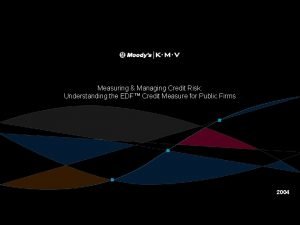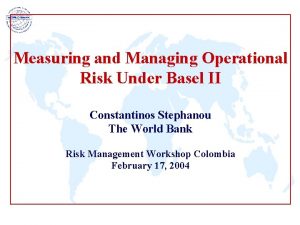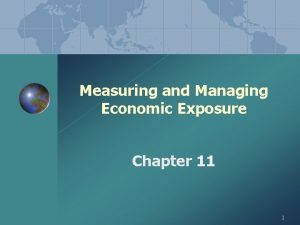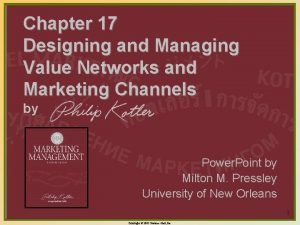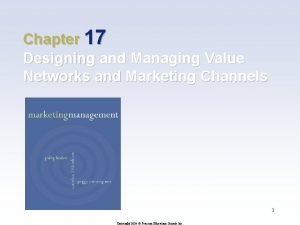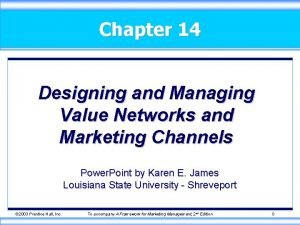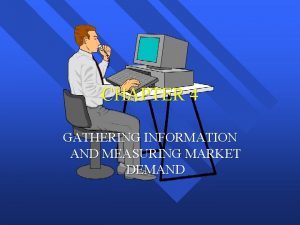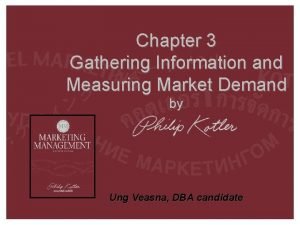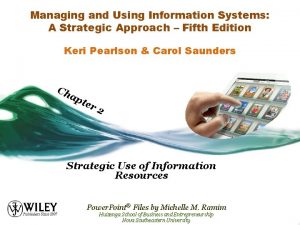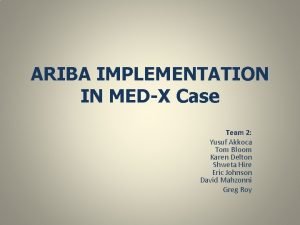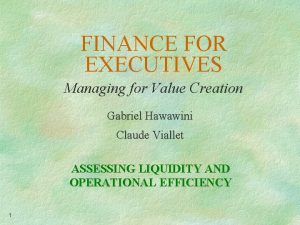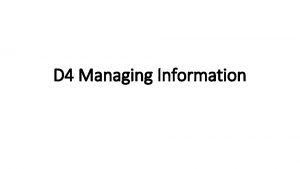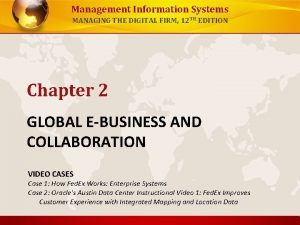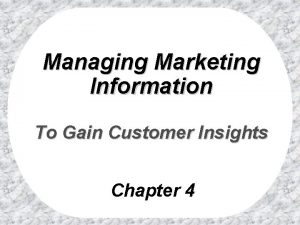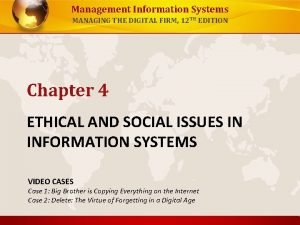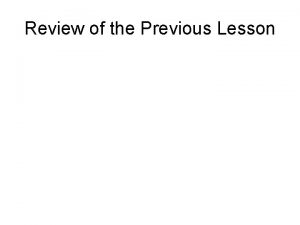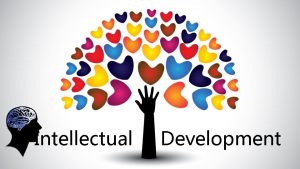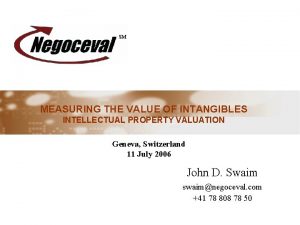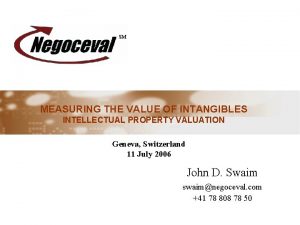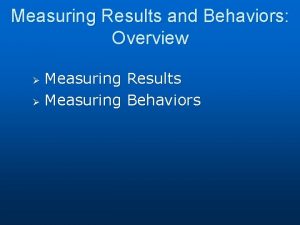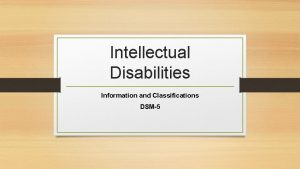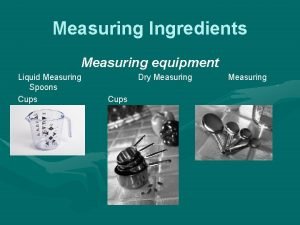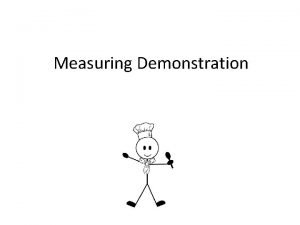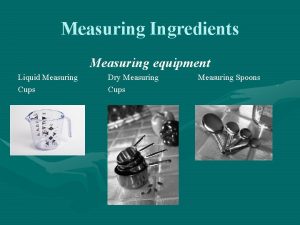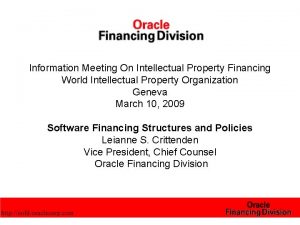Measuring and Managing Strategy Value Information and Intellectual








![Information value - A quixotic search? …[the] attempts to “value” individual intangible assets almost Information value - A quixotic search? …[the] attempts to “value” individual intangible assets almost](https://slidetodoc.com/presentation_image_h/b16d7dff0513b1a3a611780e89865af1/image-9.jpg)













- Slides: 22

Measuring and Managing: Strategy, Value, Information and Intellectual Capital Presentation to Intellectual Capital in Libraries session at 5 th International Conference on Information Law and Ethics “Equity, integrity and beauty in information law and ethics”, 29 th & 30 th June 2012, Corfu by Dr Judith Broady-Preston Director of Research and Senior Lecturer, Department of Information Studies, Aberystwyth University Email: jbp@aber. ac. uk (copyright retained)

Context and Background Need to demonstrate value and impact = not new • “ACRL has long been concerned with accountability [and] assessment [since] the early 1980 s” (2012, 4) BUT - still searching for mechanisms to describe impact i. e. effectiveness accurately • “impacts. . . are extremely difficult to measure” (Hernon & Altman, 2010, 50) • Direct vs indirect – “holy grail”? Efforts to date focused on demonstrating economic value or impact library service activity (outcome) Need to assign economic value and measure more socially oriented outcomes or aspects library activity – the qualitative

Context and Background Is economic impact sole criterion? Need to “Capture social returns” (ERS, 2011) – ACRL 2012 Report – need to demonstrate, assess and communicate impact academic libraries vis-à-vis student learning and achievement Impact on wider society – across ALL sectors – Societal benefit – logic model development: “ the process of developing [a] sectoral story in itself is not only a way of agreeing a research framework for more quantitative work, but also a useful tool with which to agree on priorities, strategies and resources for the sector” (Stanziola, J. (2010, 45). • Concomitant need to gather perceptions of value from stakeholders

Outline Context and background : drivers for impact Scope Value Impact Concepts and semantics Definitions and perspectives Models and methodologies Where are we now?

Why is demonstrating value and impact so important? The Global Economic downturn

Global retrenchment in library services The Future of University Libraries: 2012 Midwinter Report: – “continuously shrinking budgets are the “new normal” [sic] for university libraries“ (2012, 2) AND Research Information Network (RIN) and SCONUL 2010 Report: – “After a decade of growth in budgets and services, academic librarians now expect a sustained period of cuts over the next three to five years” (Challenge… 2010, 4)

Drivers for Impact • Economic recession = global – Results in need to target service activity to achieve greatest impact – Defining/determining essential (‘core) and additional (‘value-added’) services (Broady-Preston and Swain, 2012) • Open Access – Berlin Declaration (2003) creates possibility to increase markedly reach, and ergo impact academic research • REF 2014 – Research Excellence Framework – NEW = not only academic impact but also wider, societal impact • OA and Research Council funding – new business models? – Stakeholder perspective

Concepts Two core constructs. . . VALUE and IMPACT in relation to INFORMATION in relation to Information and Library SERVICES
![Information value A quixotic search the attempts to value individual intangible assets almost Information value - A quixotic search? …[the] attempts to “value” individual intangible assets almost](https://slidetodoc.com/presentation_image_h/b16d7dff0513b1a3a611780e89865af1/image-9.jpg)
Information value - A quixotic search? …[the] attempts to “value” individual intangible assets almost surely is a quixotic search…Companies achieved breakthrough performance with essentially the same people, services, and technology that previously delivered dismal performance…Value creation came not from any individual asset –tangible or intangible. It came from the coherent combination and alignment of existing organizational resources (Kaplan and Norton (2001 a) The Strategy. Focused Organization. Harvard Business School Press, 102). • Role and centrality of information value in and to organisations – concepts of intellectual capital • NB in-depth review beyond the scope of this paper

What is value? Is this the same as impact or quality or satisfaction? Perspectives: • organisation vs customer • economic vs societal Synonymous with: – – Worth? Fitness for purpose (quality)? Exceptional/Perfection? Utility Relationship to values – morality, ethics, culture Perceived value – whose perspective?

More than mere semantics? Terminology and relationships • Impact – Variation + attempts to standardise (Poll and ISO 16439, 2012) – Definitions: • “all changes resulting from an activity, project or organisation. . . intended as well as unintended effects, negative as well as positive and long-term as well as short-term” (Arvidson 2009 adapted from Wainwright 2002) • “An effect on, change or benefit to the economy, society, culture, public policy or services, health, the environment or quality of life beyond academia” (REF 2014) • “Difference or change in an individual or group resulting from contact with library services NOTE the change can be tangible or intangible” (ISO cited in Poll 2012) NB Centrality of Change

What is Impact? Differing perspectives Organisation Customer Society – Implies ‘measurement’ - the ‘Q’ debate i. e. Qualitative vs Quantitative – BUT “not everything worth knowing can be counted precisely and reduced to a rank, percentage or ratio; many aspects of information service are intangible, and must be evaluated in other ways” (Hernon & Altman, 2010, 50) – Relationship to purpose – aims and objectives (SMART) Organisational Perspective – Measures need to be Meaningful/relevant and are often related to one another to give performance INDICATORS

What is Impact ? Comparative perspective - Benchmarking and Standards • Comparisons with and to – other orgs - ‘league tables’ – external standards – accreditation – e. g. ISO (Poll, 2012) CSE (Broady. Preston & Lobo, 2011) • Process – Gap identification – Monitoring progress • Encourages “reflective” and “evidence-based practice” • Multiple benchmarking standards exist; however – “basic principles behind the present QM [Quality Management] systems…are actually rather similar. They all emphasise the continuing improvement of services…[and] all adopt a customer oriented focus” (Balague & Saarti, 2009, 227 -8)

Types of Impact Determining meaning = key to demonstrating or measuring its existence Need to differentiate between: 1. Economic impact library services on a community 2. Economic value of social returns 3. Social impact = transformative aspect of library services (Broady-Preston, 2012) No. 3 = Most challenging!

Economic value: models and theories Economic value of INFORMATION – – Balanced Scorecard EFQM Business Excellence Model Intangible Assets Monitor – (Sveiby 1997) Accounting Standards – (Stenson, Oppenheim and Wilson 2000 -2003) Economic value of Information and Library SERVICES – Return On Investment (ROI) – Cost-benefit – Contingent valuation – Secondary economic impact (Imholz & Arns, 2007)

Economic impact: models and theories Economic Impact Toolkit (ERS, 2011) – commissioned by the Archives Libraries and Museums Alliance UK (ALMA-UK) – Critique contemporary methodologies in 4 categories • Multiplier analysis • Contingent valuation – methodology of choice? (cf Poll, 2012) – Predictive vs actual • Return On Investment (ROI) – Generic studies of University performance overall claim ROI amongst others = demonstrably “inadequate” (Fryer et al , 2009; Zangoueinezhad and Moshabaki, 2011) • critique of ROI by Jim Neal (March/April 2011) “Stop the Madness: The Insanity of ROI and the Need for New Qualitative Measures of Academic Library Success” • Economic valuation

Economic value of social returns Social Return on Investment (SROI) • Outcomes –based tool quantifying social, environmental and economic value created by organisations • Narrative of how organizations create and destroy value whilst making changes in the world, producing a ratio stating how much social value (in ££s) created per 1£ spent • 6 step methodology Primer = http: //sroi. london. edu/ • UK Library e. g. http: //wales. gov. uk/topics/cultureandsport/museumsarchiveslibraries/c ymal/researchandevidence/lflevaluation/? lang=en Social Enterprise Balanced Scorecard (BSC) http: //www. proveandimprove. org/new/tools/socialenterprise. php

Social Enterprise Balanced Scorecard: Strategy map Sample strategy map Key: White circles reflect objectives Dotted arrows reflect cause and effect linkages

Social/Societal Impact Methodologies Customer Relationship Management (CRM) Customer Value Discovery (CVD) Commonality and/or Core set of customer values? Do these change over time? (Mc. Knight, 2010) Value, Values and Valuation - Values Scorecard “transcendent value” = holistic, recognising need to assess additional dimensions – human, structural, and relational capital (Town, 2012)

Impact: measuring behaviour • JISC – Activity Data Programme – “benefit from exploiting activity data” (2011) • US and UK projects = statistical correlation between library service usage and student learning and achievement • BUT – Statistical measures alone = limited perspective: – Phase 2 Huddersfield University Library Impact Data Project “Seeks to deepen our understanding…by investigating additional data such as gender, age, ethnicity, declared disability, retention, VLE and reading list use…to identify predictors for student outcomes…to understand better how library activity relates to student attainment, including causal relationships” (Stone, Collins and Patmore, 2012)

Where are we now? • Provided an overview of SOME ideas and concepts in relation to demonstrating the impact and value of information and library services • NB – not definitive! • Economic measures alone = limited perspective. However – “promoting the value of the libraries in the community also through economic statements can be quite effective. Speaking in terms of dollars and cents seem to have a heavy impact on people, both politicians and ordinary citizens who may not register the value of library services otherwise” (Aabø, 2009, 323) • BUT – a complex activity. “Money speaks” but is not the sole language in terms of demonstrating value and impact!

Finally… • In a global recession, service organisations need to focus on continuous service improvement and the customer perspective • Demonstrating value and impact may be difficult but we need to reinforce the message to staff that “ excellence in the provision of our services should always be at the forefront of our minds” (Professor John Lancaster, 2010). • Active engagement and partnership with customers = imperative; not only to be valued but to be seen as vital and survive! ANY QUESTIONS? If you think of something later, please contact me – jbp@aber. ac. uk THANK-YOU!
 Economic exposure
Economic exposure Measuring and managing credit risk
Measuring and managing credit risk Basel ii event types
Basel ii event types Measuring and managing operating exposure
Measuring and managing operating exposure Contoh value creation adalah
Contoh value creation adalah Value network in marketing
Value network in marketing Marketing channels and value networks
Marketing channels and value networks Designing and managing value networks
Designing and managing value networks Q=nqp
Q=nqp Measuring market demand
Measuring market demand Managing and using information systems
Managing and using information systems Ariba implementation at med-x: managing earned value
Ariba implementation at med-x: managing earned value Finance for executives: managing for value creation
Finance for executives: managing for value creation Marketing information and customer insights are
Marketing information and customer insights are Procedures relating to the management of information
Procedures relating to the management of information Information technology resource
Information technology resource Management information system managing the digital firm
Management information system managing the digital firm A good mis balances the information users would
A good mis balances the information users would Management information systems managing the digital firm
Management information systems managing the digital firm Managing marketing information
Managing marketing information Corporate strategy and business strategy
Corporate strategy and business strategy Chase demand strategy example
Chase demand strategy example In the previous lesson i learned that accounting
In the previous lesson i learned that accounting

